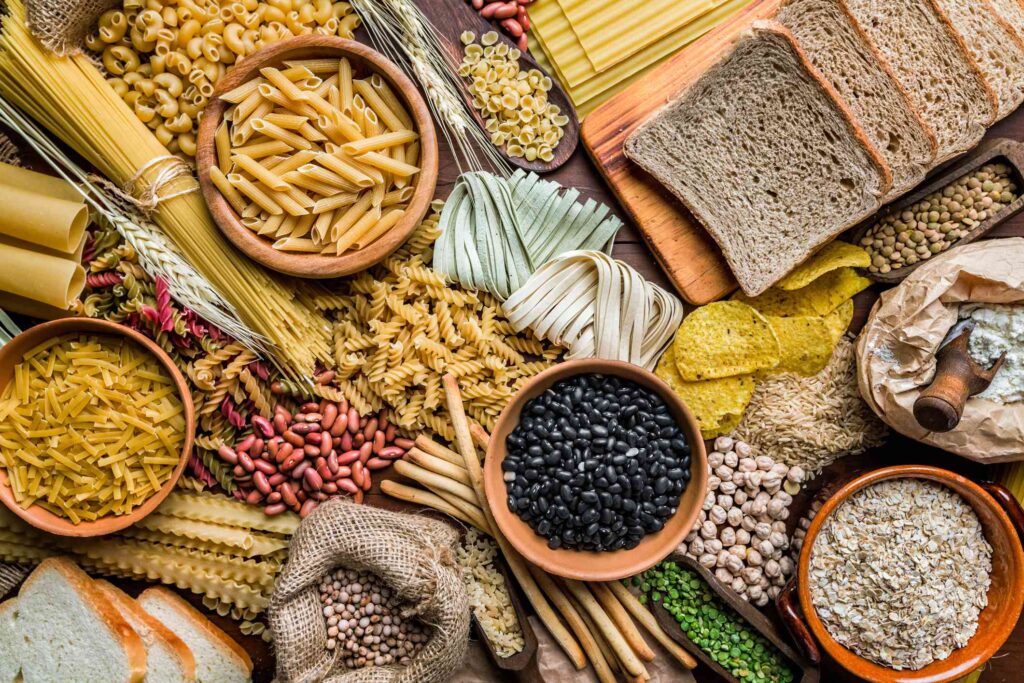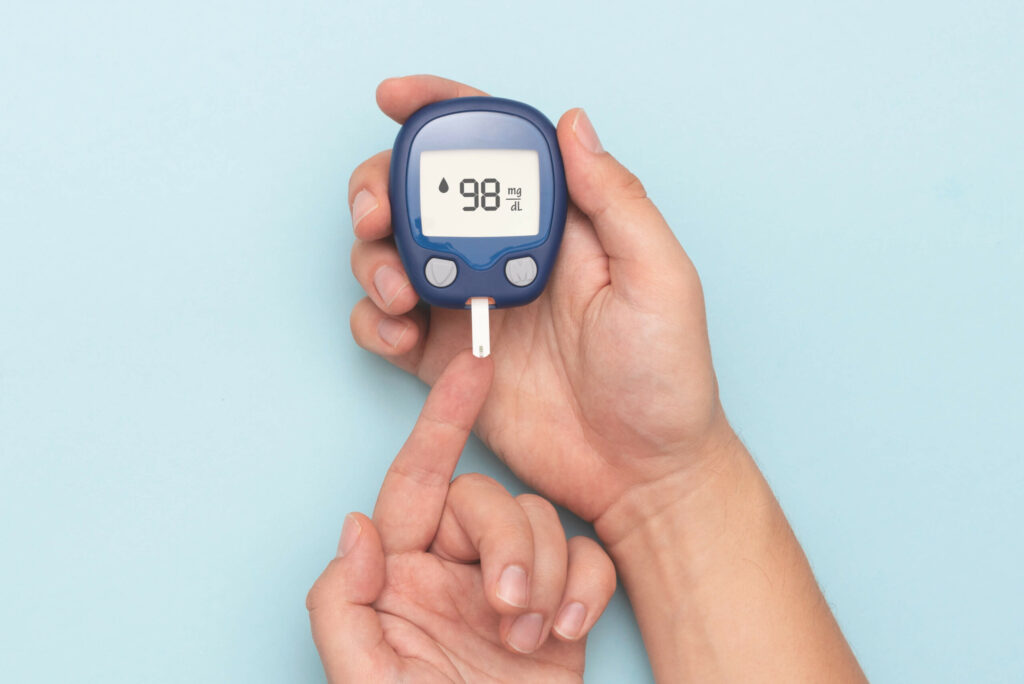High blood sugar, also known as hyperglycemia, is associated with diabetes, a disease that can cause heart attack, heart failure, stroke, and kidney failure.
High blood sugar occurs when your body fails to produce enough insulin or use insulin efficiently. The Centers for Disease Control and Prevention estimates 13% of all Americans and 25% of those 65 or older suffer from it.
But there are simple steps you can take to lower your blood sugar levels naturally:
Eat Carbohydrates Last
While it may not be possible to do this at every meal, research shows that eating carbohydrates after vegetables results in lower blood sugar levels post meal.
In one study, 16 participants with type 2 diabetes ate the same meal on separate days in various orders: carbohydrate first, followed 10 minutes later by protein and vegetables; protein and vegetables first, followed 10 minutes later by carbohydrate; or all components together.
Blood sugar, insulin, and other measures were taken just before meals and every 30 minutes after eating for up to three hours. Researchers found that blood sugar levels were significantly lower when carbohydrates were consumed at the end of the meal rather than at the start.2
Another research review concluded that the order in which you eat food impacts blood sugar levels after a meal. Researchers advise consuming foods in the following order: high-water and fiber-rich dishes (such as vegetables), then high-protein foods, then oils/fats, next slowly digested whole, complex carbohydrates, and finally simpler carbohydrates or foods high in sugar.3

Incorporate More Soluble Fiber Into Your Meals
Fiber is a type of carbohydrate that doesn’t get broken down and absorbed from the gut into the bloodstream. That means the fiber in a carbohydrate-rich food won’t raise your blood sugar. Soluble fiber (which dissolves in water) in particular slows digestion, which means that the carbohydrates that do get absorbed still enter your bloodstream much slower. This results in a lower blood sugar spike after a meal.4
This effect was seen in a 2018 study in 50 healthy adults. Researchers found that adding soluble fiber to a sugary drink resulted in significantly lower total blood sugar levels.5
Another study in people with type 2 diabetes looked at the effect of breakfast meals with the same calorie levels but different amounts of soluble fiber on post-meal blood sugar levels. Breakfast meals that contained higher amounts of soluble fiber, either from fiber-rich foods or the addition of a soluble fiber supplement, led to an 18% reduction in blood sugar levels post meal.6
Natural sources of soluble fiber include nuts, seeds, beans, lentils, peas, apples, bananas, oats, Brussels sprouts, and avocados.47
Try Intermittent Fasting
Intermittent fasting (IF) has become a popular strategy for weight loss and other health benefits, including blood sugar management.
There are several ways to carry out IF, but to manage blood sugar levels specifically, some research suggests it’s best to eat most of your calories at breakfast and lunch, and enjoy a smaller and earlier dinner before 6:00 p.m.8
Other research confirms that eating later in the evening worsens post-meal blood sugar regulation, even in healthy adults.9
However, a 2020 research review found that regardless of the specific type of IF intervention, IF improved health outcomes in people with high blood sugar and high cholesterol levels. This included improvements in hemoglobin A1C or HbA1c, a blood test that measures average blood sugar levels over the previous three months. HbA1c is one of the commonly used tests to diagnose prediabetes and diabetes.
Get moving
The less you move, the higher your blood sugar tends to be, says Asterino-McGeean. Exercise is also one of the best things you can do for your overall health, mood and metabolic rate.
“It’s important to be active, but that can be tricky depending on your lifestyle or any health conditions you have,” she adds. “So aim to move more than yesterday. If that’s all you can do, it still counts.”
The American Diabetes Association suggests starting with about 30 minutes of cardio or aerobic exercise three times a week and working up to five times a week. “If you can’t do 30 minutes at a time, focus on five- or 10-minute increments instead. Try that once a day. Move up to twice and then three times each day when you can tolerate more.”
Asterino-McGeean recommends beginning with cardio, such as walking briskly, with a dash of resistance training and strength exercises. “If you’re starting a new exercise routine, talk with your provider, physical therapist or trainer first to make sure you’re doing it safely.”
Bust your stress
Because stress impacts blood sugar, it’s important to find ways to cope, such as hobbies, exercise or talk therapy. And steer clear of coping mechanisms that negatively affect your blood sugar, like overeating or drinking alcohol.
Be a glucose detective
If you’ve been diagnosed with diabetes or prediabetes, monitoring your sugar levels can help you problem-solve when you have a blood sugar spike. It can also shine a light on your overall blood sugar trends and their causes.
Use a glucometer (blood sugar monitor) to make sure you’re in the targeted range your healthcare provider recommends. Asterino-McGeean says to check with your insurance to see if these monitors are covered. “You can also buy inexpensive ones over the counter at most grocery stores and pharmacies,” she adds.
What if home remedies to lower blood sugar don’t work?
When attempting to lower your blood sugar naturally, take the long view. “You are talking about a lifestyle change, not a quick fix,” says Asterino-McGeean. “It may take a few weeks or months to see results.”
What if you’ve been trying home remedies to lower blood sugar for a few months, and your blood sugar levels still won’t budge? Asterino-McGeean says you should also schedule an appointment with your doctor. “At this point, it’s time for a conversation with your healthcare provider to see what’s going on and discuss your options. Together, you and your doctor can determine the next steps in caring for your health.”


